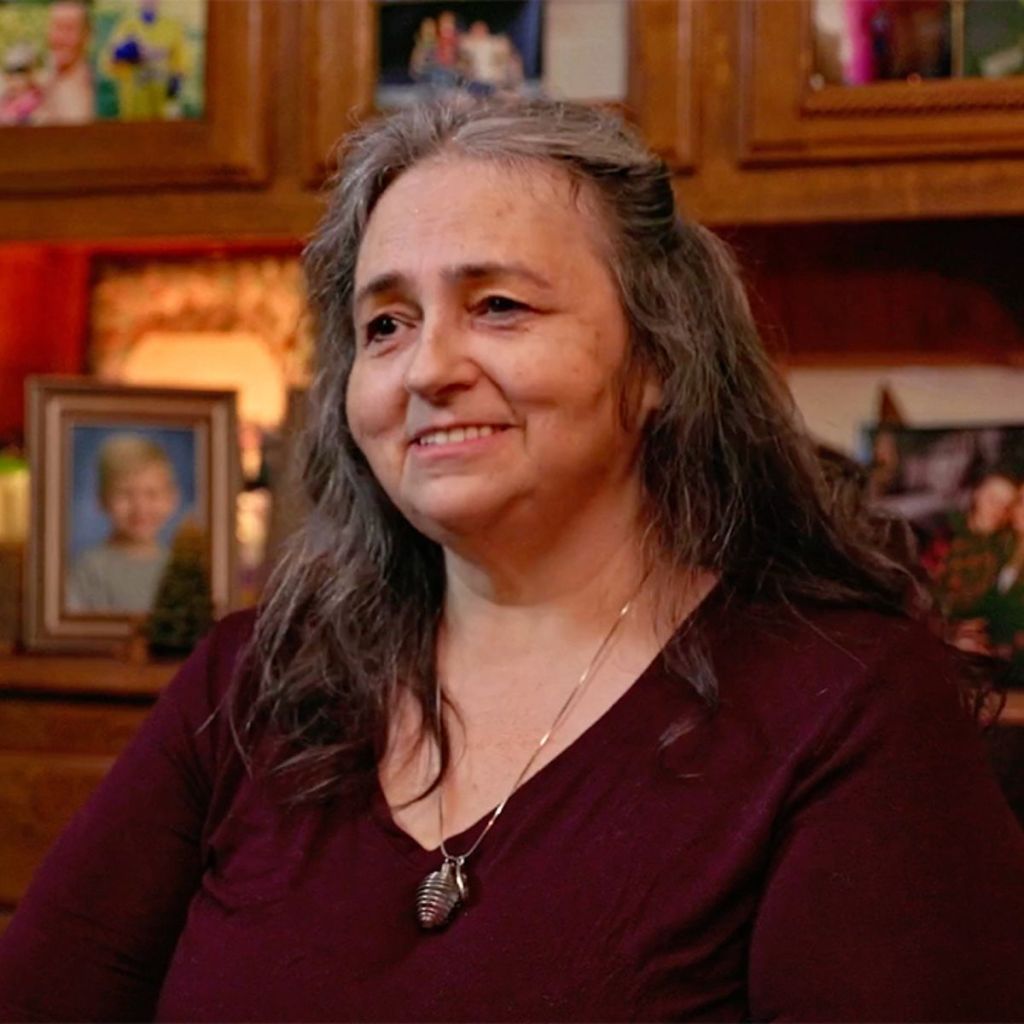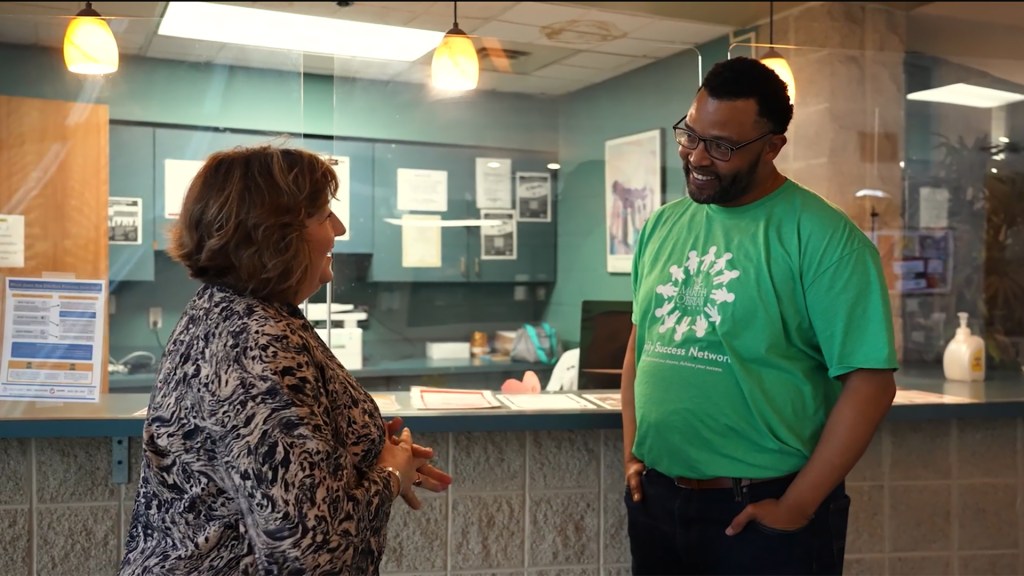
Investing in community expertise, Tennessee takes on the benefits cliff
By Gabriella Chiarenza, Fed Communities
August 29, 2023
Photo: Marsha Edwards and Shawn Sanders at the Martha O’Bryan Center in Nashville, Tennessee.
Earlier this year, Nashville mom Mackeisha Jenkins was promoted to assistant manager at the restaurant where she worked. The new role came with a raise. “When I first got bumped up, I was thinking, I can do more for my kids,” she said. “It was a joy.” That is, until she learned what the promotion would cost her. Because of the roughly $200 more she would make each month, she was about to lose more than $800 in monthly public assistance benefits. Just like that, Jenkins hit a benefits cliff.
If you receive public assistance, you can experience a benefits cliff if your income goes above the threshold to qualify for a specific benefit. That can make people think twice about taking a new job or accepting a promotion or raise.
That’s what happened to Jenkins. Though she worked nearly full time six days a week at her job, her wages were low enough that she drew on public benefits to cover costs for herself and her four young children.
Jenkins had no idea that the cliff was coming. She found out when the office that administered her food assistance benefit called to tell her that it would immediately drop by $344 a month due to her raise at work.
To make matters worse, when Jenkins reported her raise to the office that managed her housing assistance benefit, they told her that her monthly rent also would jump by $500. Panicked, she momentarily considered quitting her job. “It wasn’t that I felt like I just needed the benefits,” she said. “It’s that I don’t want my kids to see me struggle. Anybody that has kids, they understand that.”
Investing in community expertise, Tennessee takes on the benefits cliff (video, 3:10)
Open transcript in new window >
Patching together resources to keep her family afloat
Jenkins was determined to stay in the better-paying job she had earned. She pieced together emergency resources like food boxes and utility assistance from community organizations to help meet her family’s needs until she could figure out what to do longer-term.
“It’s been very stressful,” she said. “I’ve been losing sleep. I’m trying the best that I can, but it’s hard to do it by yourself.”
One of the places she turned to for help was the Martha O’Bryan Center, a local anti-poverty organization. Staff at the center have helped Nashville residents, including Jenkins, for more than 125 years.
Jenkins explained her dilemma, and O’Bryan Center staff got to work connecting her with the immediate resources she needed. Did she know, they asked, that they also were launching a new program called Our ChanceTN to help people like her navigate benefits cliffs?
Jenkins wanted to hear all about it.
A rare opportunity to test large-scale pilots to fight poverty
Our ChanceTN is the product of an opportunity to leverage funding and resources at the federal, state, local, and private-sector levels.
Funds from the federal Temporary Assistance for Needy Families (TANF) program support the initiative. The TANF program provides cash assistance to lower-income families to help cover costs such as work training and child care. States can also use TANF dollars to fund local and regional programs to help lower-income families in a variety of ways.
Each state receives an allocation of TANF dollars every year from the federal government. If states do not spend their full federal TANF allocation each year, the unspent funds remain with the state rather than being sent back to the federal government. Tennessee had a reserve of more than $700 million in unspent TANF funds by 2021. At the time, it was one of the largest state pools of unspent TANF dollars in the country.
The Tennessee Legislature passed the TANF Opportunity Act that year in part to encourage active spending of these funds on programs and resources for lower-income families in the state. The legislation created the Tennessee Opportunity Pilot Initiative (TOPI), through which the state could fund a set of promising community-sourced ideas.
“We believe communities know it best,” said Clarence Carter, Commissioner of the Tennessee Department of Human Services (TDHS). “Then we empower the community to design and execute the solution.”
He added, “What I would love to see at the end of this TOPI period is that Tennessee has an approach that is dedicated to moving the needle for those we serve, that our programs and processes work, and that we can truly reduce poverty. That’s what we want to prove here.”
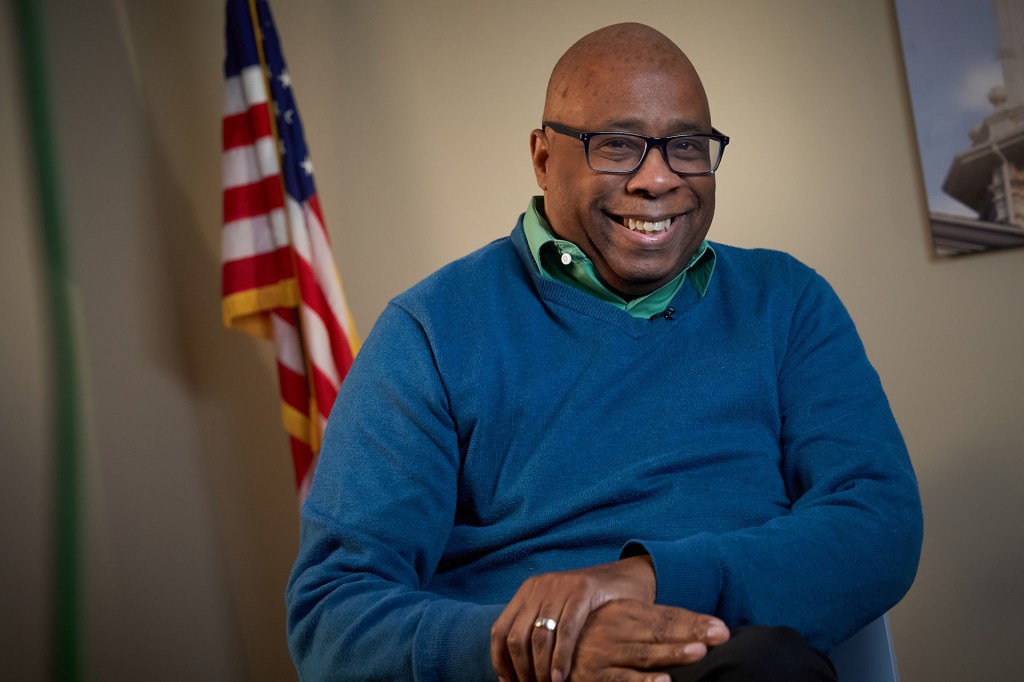
Clarence Carter in his office in Nashville, Tennessee.
State funding and regional knowledge combine to address the benefits cliff
TDHS funded seven initiatives in May 2022, awarding each $25 million. One of these was Our ChanceTN, designed by the Tennessee Alliance for Economic Mobility (TAEM) and chosen specifically by TDHS for its emphasis on addressing the benefits cliff.
“Tennessee’s labor participation rate is right at about 60 percent,” said Carter. “There are currently some 400,000 individuals between the ages of 18 and 64 [who] are not retired, care providers, or students who should be in the labor force here but are not.”
“We see the benefits cliff as playing a vital role in that,” he added. “We have not optimized the number of individuals that can be contributing to Tennessee’s growth.”
The aim of the three-year Our ChanceTN pilot is to help 900 central Tennessee families navigate through benefits cliffs and on to their individually set employment goals. The pilot provides customized benefits cliff coaching and assistance through the fall of 2025. Eligible participants—referred to as caregivers in the program—must be responsible for up to four children, earn an income up to $55,000 a year, and be receiving at least one public assistance benefit.
TAEM, the alliance that designed the pilot, comprises 32 local organizations from across the seven counties of central Tennessee. It’s headquartered in the Martha O’Bryan Center—which also serves as the pilot program’s backbone organization. Our ChanceTN draws on the extensive experience and understanding of each local organization involved.
“The TOPI funding made this possible,” said Marielle Lovecchio, TAEM’s director. “It catalyzed this work. The state invested in these community-based solutions.”

“TOPI funding made this possible. It catalyzed this work. The state invested in these community-based solutions.”
– Marielle Lovecchio, Director, Tennessee Alliance for Economic Mobility
A chance to help residents and test innovative solutions at the same time
People working on benefits cliffs issues across the country have been closely watching the Our ChanceTN initiative since it launched in November 2022.
“This is one of the most, if not the most, comprehensive pilots we’ve ever seen around benefits cliffs,” said Brittany Birken, one of the leaders of the Federal Reserve Bank of Atlanta’s work on benefits cliffs. “It’s very ambitious. We’ve already seen other partners around the country express interest in this work. As they’re beginning to plan for their own pilots, they’re absolutely interested in what can be learned from this one.”
As they planned their program proposal for TOPI, alliance members did their homework. While each TAEM organization has ample experience helping community members, they wanted to be sure they fully understood how families encountered the benefits cliffs. They surveyed more than 200 families and conducted focus groups and interviews with lower-income parents in the region. They scoured existing national data and research around public assistance benefits use and mapped out where resources were available for families across the seven counties.
The surveys and focus groups shed light on the prevalence of the benefits cliff for many area families. Once the benefits cliff was described and defined for them in focus groups, 85% of parents said they had experienced a cliff. Of these, 63% said they had resisted working additional hours, 50% resisted getting a better-paying job, and one quarter turned down a raise, all for fear of hitting another benefits cliff.
How fear of losing benefits affects parents’ job choices
Of the 85% of parents who said they had experienced a benefits cliff…

63% had resisted
working additional hours

50% had resisted
getting a better-paying job

25% had turned down
a raise
Souce: TAEM survey and focus groups
Help that’s there when you need it
Making sure people understand why a benefits cliff is happening—and that it isn’t their fault—is a key tenet of the Our ChanceTN program. So is ensuring that help is there when a cliff arises.
That’s not how things usually go for people experiencing a benefits cliff. When Jenkins lost her benefits, she didn’t know where to turn.
“I broke down crying when I heard my benefits were getting cut off,” she said. “I tried to talk to them, but they said it’s a scale that they have to go by. I went to social services and there was no help.”
In the typical model of public assistance administration, the benefits office staff’s job is defined. They are there to help those who need benefits apply for and receive those benefits, and to let people know when their reported income has pushed them over the limit for the benefit program.
“One of the things that’s so challenging about this work is that when it comes to public assistance programs, each is designed for a very specific purpose, but none are designed for the comprehensive needs of families,” said the Atlanta Fed’s Birken. “So, very often, community support services providers can be fairly siloed.”

“One of the things that’s so challenging about this work is that when it comes to public assistance programs, each is designed for a very specific purpose, but none are designed for the comprehensive needs of families.”
– Brittany Birken, Atlanta Fed
When you hit a benefits cliff, in many instances you’re letting go of the hand of the case managers who helped you with your benefits. That often happens before you have the financial means to bridge the cliff. Without resources and support, you might back away from a promising opportunity to earn more income.
It’s one reason why the Our ChanceTN model shifted away from a case management approach and toward pairing each caregiver with a family-centered coach.
“A family knows their strengths and weaknesses better than anyone,” said Elliott Huff, an Our ChanceTN coach in Nashville. “My goal is to listen and, when we start the process together, to help families figure out the barriers preventing them from moving forward.”
Each caregiver works with the same coach throughout their enrollment in the program. The hope is to build a strong relationship between caregivers and coaches that goes beyond transactional service provision to transform the family’s economic prospects.
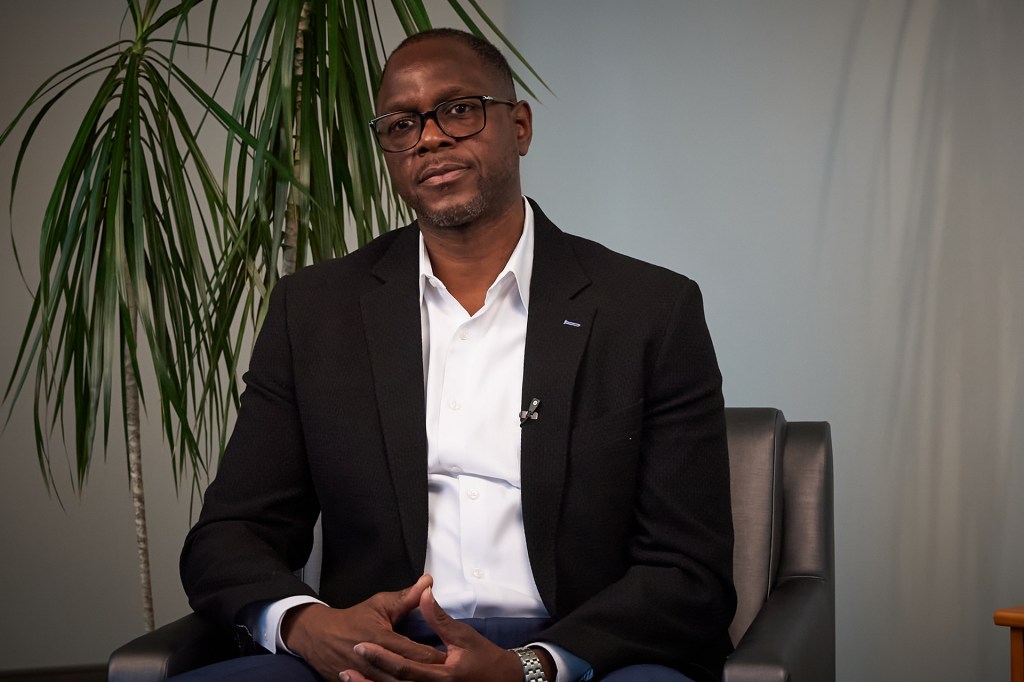
Elliott Huff, Our ChanceTN coach, in Nashville, Tennessee.
Leveraging trusted relationships
In addition to establishing the important relationship between caregivers and coaches, the initiative is run through 32 known and trusted community resource organizations.
The Our ChanceTN model also deliberately connects these organizations to one another across central Tennessee. County resource navigators on staff are tasked with communicating across organizations to connect caregivers with things like housing assistance and transportation.
“We heard from partners that they see where the deficits are in their county, but they do not have the time or manpower to, say, talk to seven churches that might be able to come together to help make more child care available,” said the O’Bryan Center’s CEO and President Marsha Edwards. “But the navigator that’s a part of this funding now will be doing that kind of collaborative work.”
The program also has benefits, employment, and education specialists on staff in each location to connect caregivers to training and certificate programs focused on in-demand careers.

Martha O’Bryan Center CEO & President Marsha Edwards in Nashville, Tennessee.
Building community peer to peer
Our ChanceTN also has a group of peer ambassadors to help get the word out about the program and help those unsure about applying to feel more comfortable doing so. Peer ambassadors are caregivers enrolled in Our ChanceTN. They’re going through similar challenges themselves.
“I’m in recovery, and when I learned that other people went through the same thing I did, I started really feeling like there is a way out of this,” said Raven Lockridge, an Our ChanceTN peer ambassador. “I feel that same way about the benefits cliff. I can say to people who feel down and hopeless about it, hey, I’m doing this program, it’s helping me and there are resources here for you. I think that is just so empowering.”
The Our ChanceTN peer ambassador role is also a paid position, offering caregivers who take on the role a work opportunity helping others.
A financial bridge to get through transitions from benefits to work
Benefits cliffs happen to people in moments of transition. When TAEM surveyed families about their experiences with the benefits cliff, 90% said that if they had financial assistance that would help them through a cliff, they would take a better-paying job even if it meant losing their benefits. Nearly 80% responded that they would work more hours, 77% that they would take a raise, and 69% that they would access more education. Those responses point to the importance of a transitional benefit.
“Once you’ve lost a public benefit, the transitional benefit is designed to help you move beyond the cliff,” said TAEM’s Lovecchio. “In previous situations, those families would have had to take steps backward away from the cliff, or they would have leapt and fell.”
In Our ChanceTN, the transitional benefit can cover needs including child care, housing, and health care costs. Payments for approved uses are made directly to providers by Our ChanceTN.
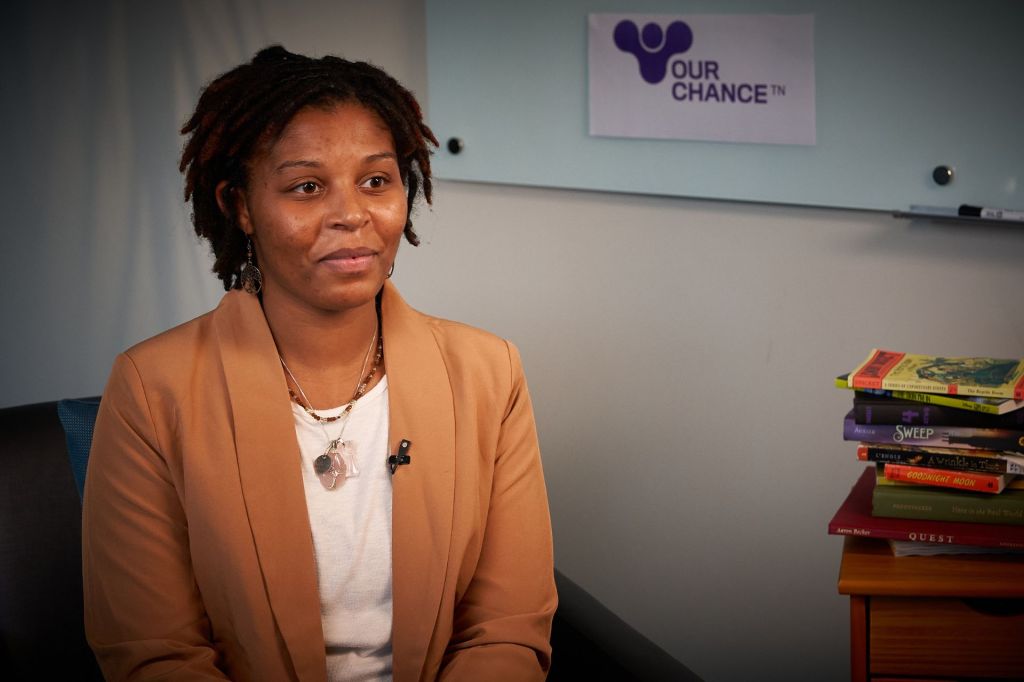
Raven Lockridge in the Our ChanceTN office in Nashville, Tennessee.
Tools allow coaches and caregivers to identify cliffs ahead
As in some other approaches to the benefits cliff, Our ChanceTN provides caregivers and coaches with a calculator. The tool allows caregiver and coach teams to enter a family’s existing benefits information and generate a graph showing where caregivers will face cliffs as their income rises. Their Our ChanceTN transitional benefit then is based on this graph.
TAEM developed the geographically specific calculator with a technology partner based on information provided in the Atlanta Fed’s Policy Rules Database (PRD). Benefits programs are designed and administered differently in each US state. Income thresholds to qualify for each benefit also vary across programs and states. The PRD puts all those rules and limits for each state and county into one easily referenced place.
“It was really exciting to learn that the policy rules database we created has value and application for other tools,” said Birken of the Atlanta Fed. “We knew it provided opportunity for research, but to know that it could also be useful for other tools was a nice affirmation.”
Learning through growing pains
Like any new undertaking of its scale, Our ChanceTN has met with some challenges as it gets off the ground.
One of the biggest issues partners faced in the early months of the program is balancing the rigorous assessment and research elements of the initiative with the need to establish trust among families right off the bat, said Lovecchio.
When families express interest in enrolling in Our ChanceTN, partners take them through several screening steps to determine eligibility and placement. “That five-hour lead-in process to getting enrolled is really tricky,” she said. “It means that you might have a nice connection with someone who you’re talking to about this opportunity, and then you go through multiple steps where it feels less caregiver-centered and more like research.”
“This initiative is making a big ask of families,” Lovecchio acknowledged. “For some families, trying to get off of benefits has been a multigenerational challenge,” she explained. “You’re asking them to do something so courageous that, in the past when they’ve done it, has really burned them.”
It’s an awkward balance. Lovecchio suggested that future pilots could explore finding ways to make the information-gathering aspects of the program less overwhelming on the front end, while still getting the details needed to ensure families are eligible and their progress can be tracked over time.
Slow, steady progress in a long-term initiative
As of July 2023, a third of the 600 families prescreened for the program have been qualified and enrolled in Our ChanceTN. Enrollment will continue throughout the year. It’s been slow but steady growth, Lovecchio noted, with many wins along the way.
“We’re hearing some wonderful stories about our families and their progress,” she said. “Some caregivers are leaving unsafe relationships and finding stable housing. Some have been able to access child care and are applying to go back to school. Some are even dreaming of opening up their own businesses.”
Partners are bringing those enrolled in the program together so they can support one another along the way. Resource navigators have found a partner to provide free car repair to caregivers who need it, expanded the child care options available to caregivers throughout the seven counties, and forged partnerships with local housing organizations.
Setting a precedent
Watching these early successes and adjustments, leaders in the field are excited to see how the program progresses, and what it might mean for the future.
“I’m so grateful for how open TAEM is,” said Birken. “They’re telling us what’s working, what’s not working well, and what adjustments they’ve made.”
State leaders in Tennessee are also watching closely and are looking forward to sharing the pilot’s outcomes. They see potential for the Our ChanceTN to inform larger-scale programs and even other state and federal policy ideas.
“We are currently in conversation with human services affinity organizations and even Congress,” said TDHS Commissioner Carter. “We’re saying, we rigged this together and we’ve learned these hundred things. If you could fix these things for us, not only Tennessee but all states would be able to take this more intentional approach to growing capacity to reduce dependency.”
Staying on track to a stable future
In Nashville, Mackeisha Jenkins is looking forward to her future. Working with her Our ChanceTN coach Elliott Huff, she’s finding her way through the benefits cliffs that followed her promotion.
“Without this program, I would have quit my job,” she said. “I would’ve had no other choice. It was either try to work and lose it all, or just quit and not have to lose anything. That’s how I saw it.”
Instead, she’s now able to keep working at the restaurant while she studies to get her GED. “I like my job,” she explained, “but that’s just a stepping stone.” She hopes to eventually own a home, go to college, and move into a higher-paying career.
“I want my kids to see me secure,” Jenkins said. “That’s my goal, and that’s what I’m looking forward to.”
Please note that the Federal Reserve System does not provide grants or funding to the general public or to partner organizations. We do not endorse or make any representations as to the suitability of partner organizations or their programs, and we do not advise on distribution of funds by partners.
Special thanks to Scott Fisher, David Fine, Lina Sonnier, and Jordan Stockton from the Atlanta Fed for producing, filming, and editing Investing in community expertise, Tennessee takes on the benefits cliff.


